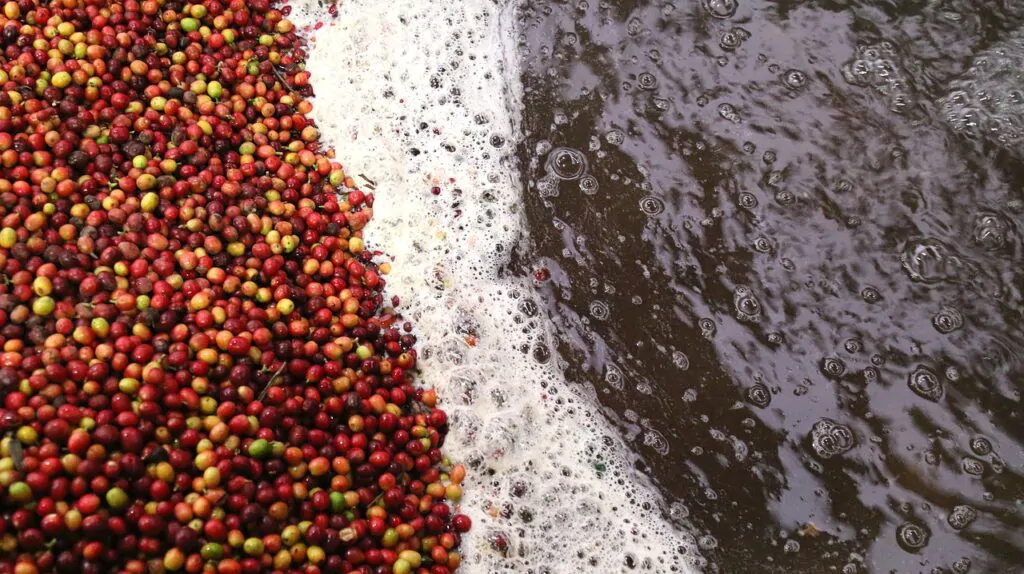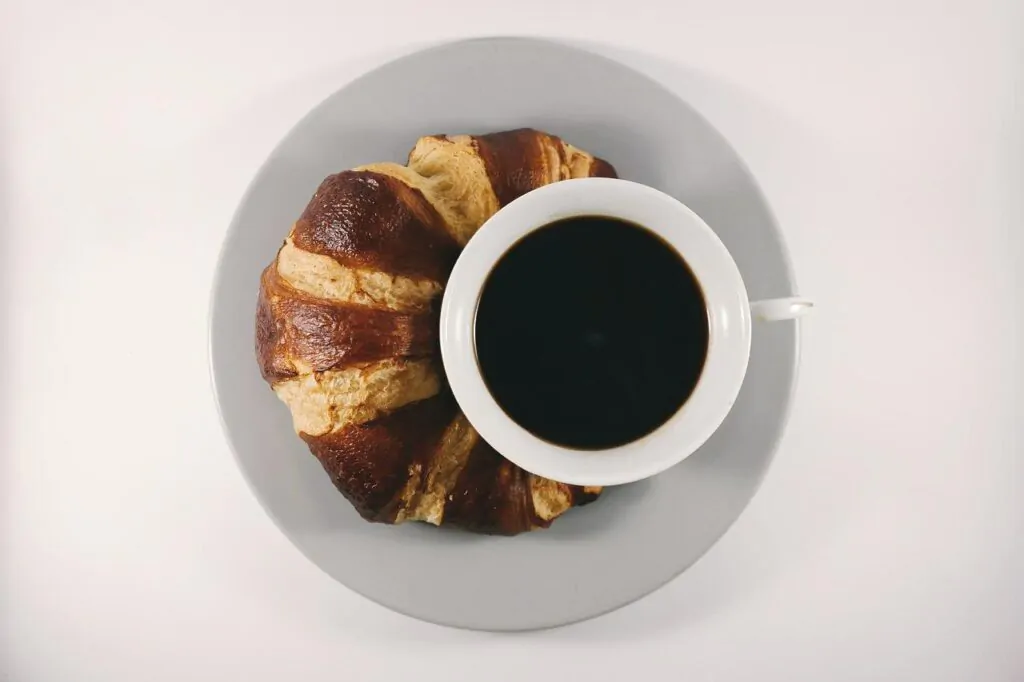Mundo Novo coffee is a specialty coffee that is known around the world. So, what is Mundo Novo coffee exactly? Keep reading to find out.

Brazil is the world’s leading producer of specialty-grade coffee. The coffee beans are wet (washed), dry (unwashed), or pulped natural (semi-washed). Brazil’s climate is ideal for natural processing, with more sunny weather than rain.
Mundo Novo coffee grows in Brazil — a natural hybrid of Typica and Bourbon coffee plant. It is a favorite among farmers due to its resistance to diseases and higher fruit yield than a Bourbon varietal.
However, the Mundo Novo coffee varietal did not inherit the flavor profile people want from Bourbon. However, this does not mean that the Mundo Novo is not a high-quality coffee bean. In fact, people who have tried this type of coffee described it as thick, sweet, and lower in acidity.
Keep reading to learn more about this type of coffee and other varietals and cultivars.
Mundo Novo Coffee Origin
Mundo Novo is an interesting cultivar as it is a natural hybrid of Bourbon and Typica. This variety came to light in 1943 before it started being distributed to farmers in 1952. Today, Mundo Novo coffee is widely grown all over South America.
Varietals and Cultivars
Brazil is home to many rare coffee varietals. For example, there are two different color varieties of Bourbon — Bourbon Vermelho, which is red, and Bourbon Amarelo, which is yellow.
The Bourbon varietal Caturra and the Typica varietal Maragogype are both products of natural mutations. Catuai is a cultivar that was developed in Brazil in the late 1940s as a cross between Caturra and Mundo Novo.
The majority of the coffee exported from Brazil are Mundo Novo varietals, making up 40% of the coffee exports. As mentioned earlier, Mundo Novo is a natural hybrid of the Typica and Bourbon coffee plant that was discovered in Brazil in 1943.
About The Coffee Beans
Most of the coffee exported from Brazil is Arabica. When making instant coffee, most brands use 20% Robusta beans, while 80% of the Arabica beans are used to create specialty coffee blends.
The Robusta beans are grown in the north of the country as the terrain there is flatter. It is also warmer than in the south, where most of the Arabica beans are grown.
In southern Brazil, Minas de Gerais is the home of specialty coffees. The Mundo Novo, Catuai, Icatu, Obata coffee beans, and other premium-grade espresso beans are grown in this area.
Taste
Brazilian coffee is usually a blend of the following:
- Mundo Novo is a natural cross between Typica and Bourbon coffee plants and a favorite among farmers for its disease resistance. It also has a higher fruit yield compared to a Bourbon varietal. Its taste is described to be thick, sweet, and less acidic.
- Catuai, is a cultivar created from the Mundo Novo and Caturra varietals. It tastes sweet and has a flavor similar to a Bourbon varietal.
- Icatu is a hybrid of Bourbon Vermelho and Robusta. It is a good latte partner because it has distinct maple syrup, cocoa, and malt flavors.
- Obata is a coffee that was derived from Sarchimor and Mundo Novo. It is a varietal with a long history.
- Sarchimor is a hybrid of Villa Sarchi and Timor. It has a smooth taste with honey and floral notes. This type of coffee bean is typically dry-processed.
Processing Methods

Brazillian coffees are processed in any of the following methods, including:
- Wet
- Dry
- Pulped Natural
Wet: This processing method is used to remove the four layers that surround the coffee bean. The coffee beans produced from this method are cleaner, more vibrant, and fruitier.
Dry: In this processing method, the coffee beans are placed in water, and those that float are picked out. The remaining coffee beans are then dried in concrete slabs. The coffee beans from this method are full-bodied, smooth, and sweet with a complex flavor.
Pulped Natural: This processing method involves pulping the coffee beans. However, it skips the fermentation phase to remove the coffee silverskin, which results in coffee beans having the traits of the coffee beans that have gone through the dry and wet processes.
Preparation And Pairing Options
You can make Mundo Novo coffee any way you like. If you need inspiration, here are some ideas:
Cold Brew And Almond Croissant

While hot coffee is brewed quickly, cold brew is a slow process taking 12 to 24 hours. The idea grind is medium to coarse, but you’re free to use whatever roast or bean you like.
Instructions:
1. Put two and two-thirds cups of ground coffee in a pitcher, then add eight cups of cold water.
2. Cover the pitcher once the grounds are saturated, then place it in your refrigerator overnight.
3. With a metal strainer or cheesecloth, strain your coffee to eliminate the grounds.
Since cold brew is concentrated, you can dilute it with milk or water and ice.
The process of cold brewing gives the Mundo Novo coffee a nutty undertone that pairs well with similar flavors, like hazelnuts or almonds. Enjoy your coffee with an almond croissant. You can also try pairing it with banana walnut bread.
You may also be interested in reading our guide on how to make cold-brew coffee at home.
Espresso And Berry Coconut Smoothie Bowl
Mundo Novo coffee is a type of dark roast coffee. This makes it a great choice for making espresso. You can enjoy as is, or make a cappuccino or another milky drink.
For starters, you can first try pairing your espresso with a berry coconut smoothie bowl. You can also try pairing it with a creamy grits. You may also be interested in reading our guide on how to use an espresso machine.
Kinds Of Arabica Coffee Beans
The different kinds of Arabica coffee beans are known as varietals, which have differing characteristics – such as the following:
Typica
The Typica varietal can be cultivated in most coffee-producing regions. Many different cultivars have been created from this variety. Even though Typica coffee trees have a lower fruit yield, they produce quality coffee beans nevertheless.
Bourbon
Like the Typica varietal, many different cultivars have been created from the Bourbon varietal. The French developed it in 1708. This coffee was cultivated on “Bourbon” island in the Indian Ocean. It is now known as Reunion.
Compared to Typica, Bourbon has wider leaves and bigger cherries. It has a conical shape, just like Typica. Bourbon produces a richer-tasting brew and yields 20% to 30% more cherries than Typica.
Caturra
The Caturra varietal, a modified version of Bourbon, was discovered in Brazil and got its name from the town where it was first discovered. With that said, this zesty coffee is actually better suited to the South American and Brazilian climates.
It has wide, waxy, wavy leaves just like the Bourbon varietal, but only shorter and looks thicker and more bushy. Caturra produces a milder coffee, and it needs careful attention to flourish.
Catuai
The Catuai varietal is a hybrid of Mundo Novo and Caturra. Caturra is a short, bushy coffee plant with a higher fruit yield. Catuai needs quite a lot of fertilizer and attention, producing red or yellow cherries that taste fruity.
Blue Mountain
The Blue Mountain is a variety of Typica coffee found in Jamaica. It is resistant to coffee berry disease. Blue Mountain thrives at high altitudes, which is why it’s named after Jamaica’s Blue Mountains.
You may also be interested in reading our guide on the main types of coffee beans.
